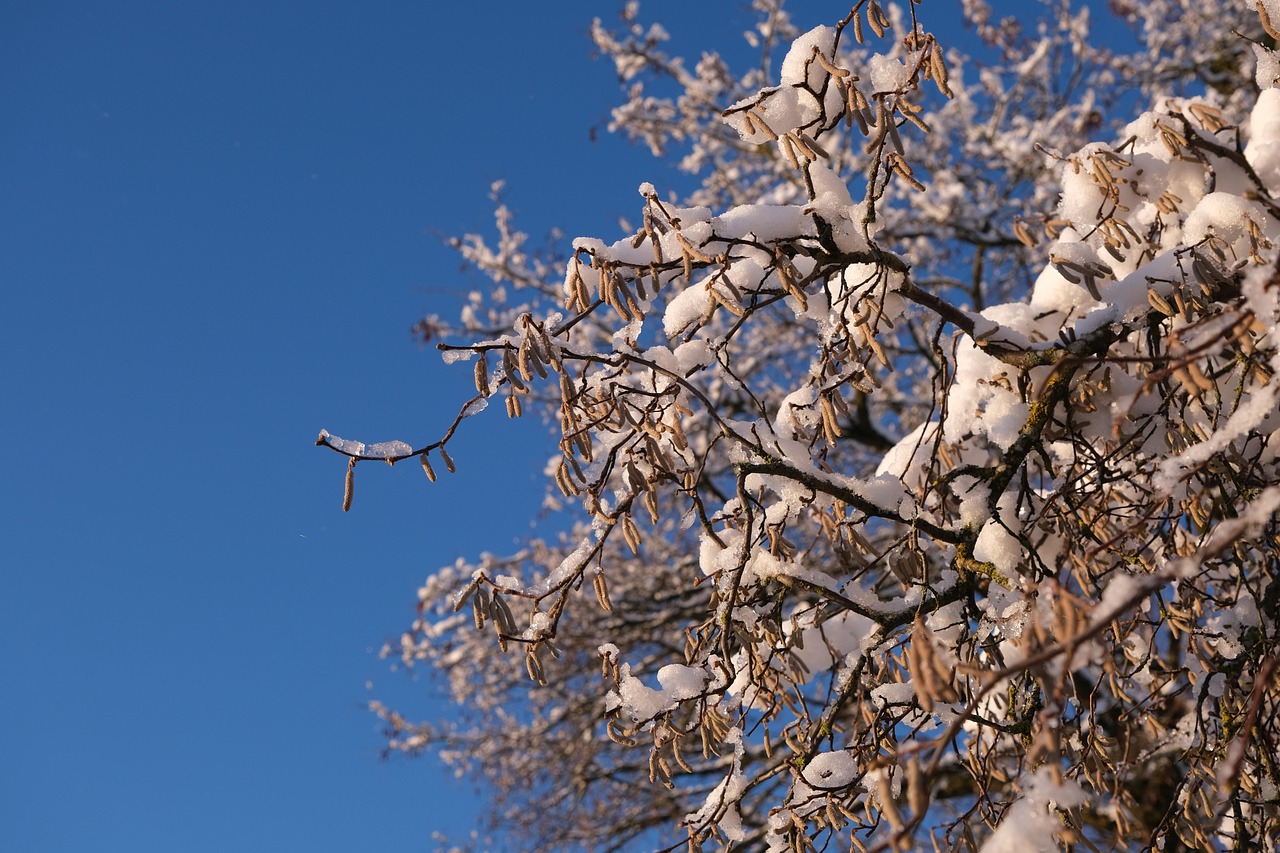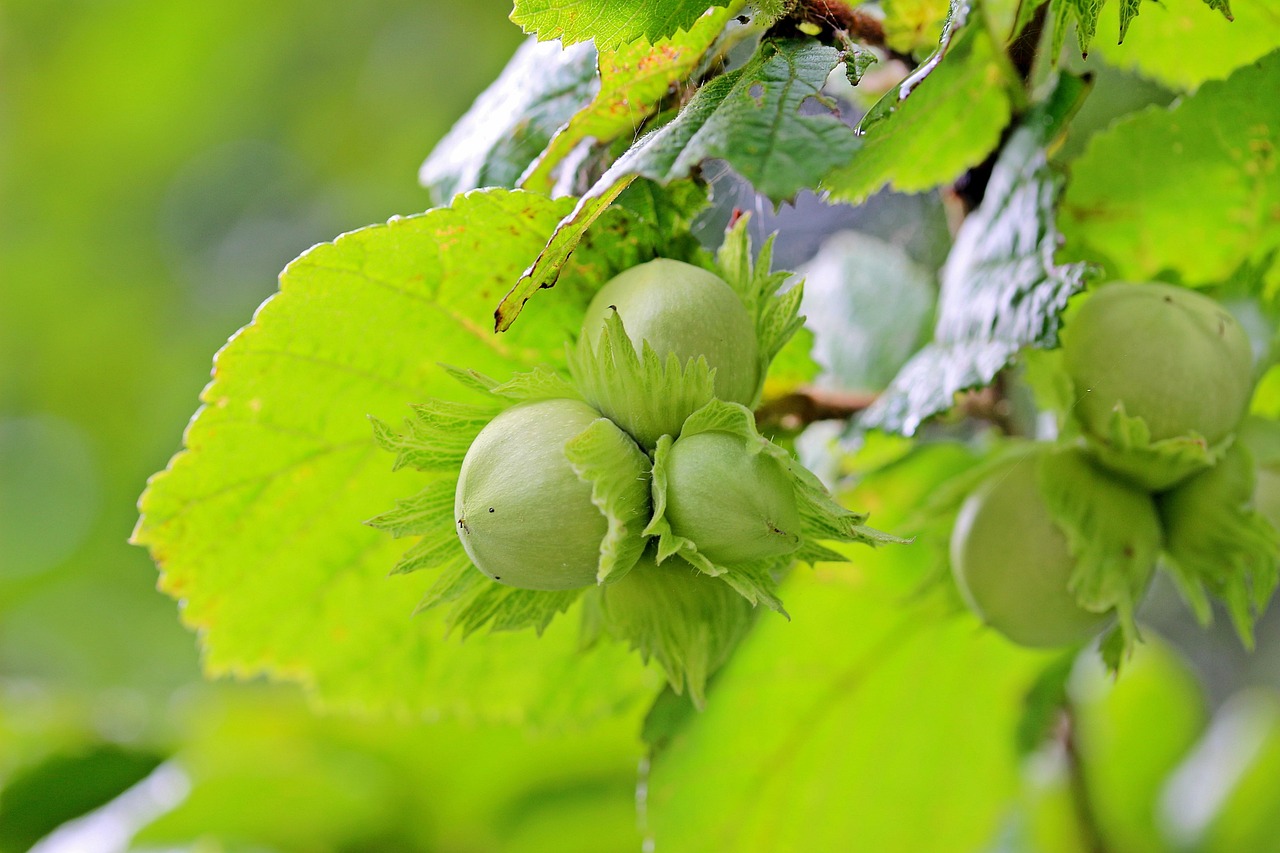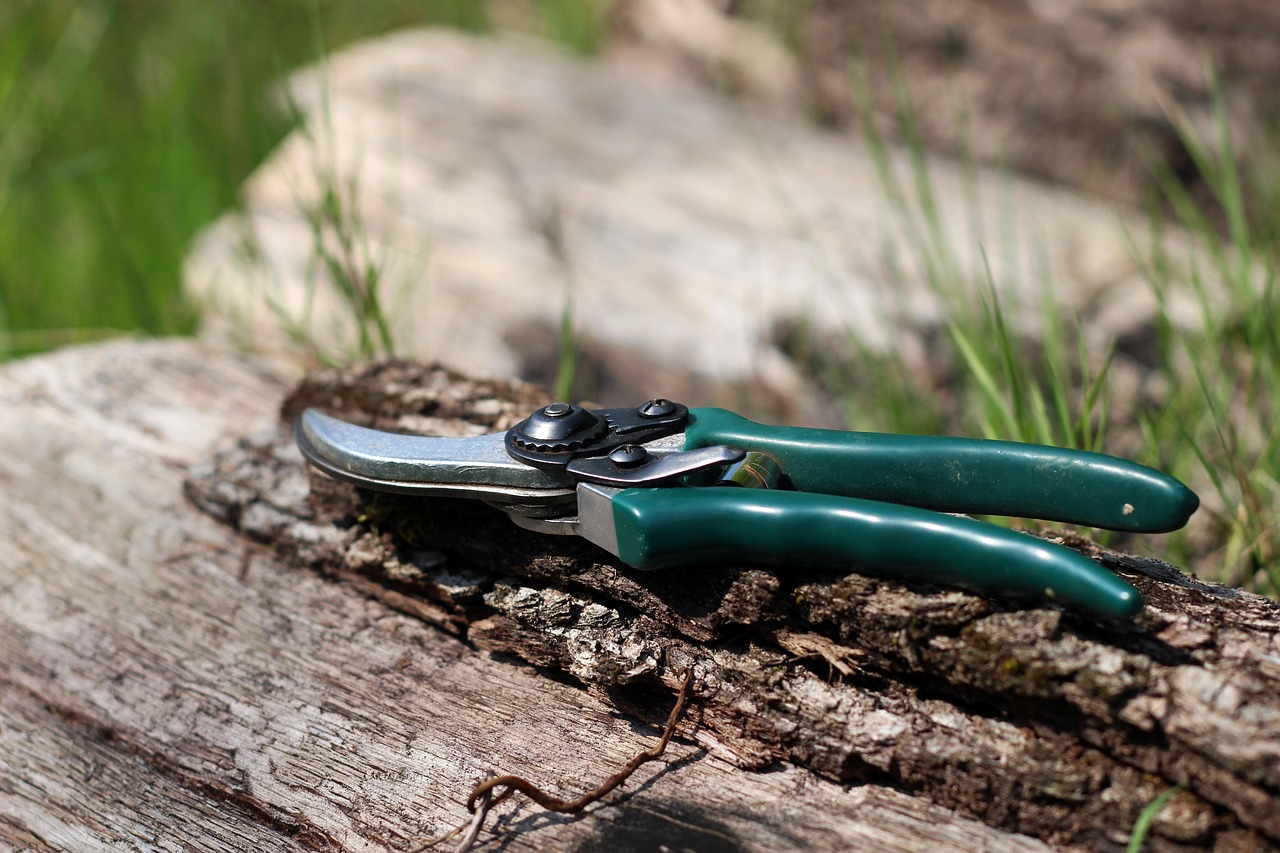Hazelnut orchard pruning is essential for hobby and small farmers to maintain tree health, improve nut quality, and enhance overall yield. Proper techniques promote better air circulation and sunlight penetration, which are vital for the growth of hazelnut trees.
Hazelnuts are a popular nut variety due to their rich flavor and nutritional benefits. They are often grown in orchards, providing a rewarding experience for both hobbyists and small-scale farmers. However, successful hazelnut cultivation requires proper care, of which pruning is a critical aspect. Pruning involves the selective removal of branches to shape the tree, enhance its health, and maximize production. Understanding the right methods and timing for pruning can significantly impact the productivity of your hazelnut orchard.

The optimal time for pruning hazelnut trees is during their dormant season, typically late winter to early spring. This period allows farmers to assess the structure of the tree without the distraction of foliage. It is crucial to use sharp tools to make clean cuts, reducing the risk of disease and promoting quicker healing. The goals of pruning include:
- Removing dead or diseased branches
- Improving air circulation within the canopy
- Allowing sunlight to reach all parts of the tree
- Encouraging healthy new growth
- Shaping the tree for easier harvesting
Understanding Hazelnut Tree Growth
Hazelnut trees (Corylus avellana) are deciduous shrubs that can grow up to 20 feet tall. They typically start producing nuts within three to five years after planting. Understanding their growth habits is crucial for effective pruning. The trees develop a bushy shape with multiple stems, which can lead to overcrowding if not managed properly. Regular pruning helps maintain an open center, allowing light and air to penetrate.
One of the significant factors affecting hazelnut yield is the tree’s age. Young trees require different pruning techniques compared to mature ones. For instance, young hazelnuts should be pruned to establish a strong framework. This involves selecting the best stems and removing weaker ones to encourage robust growth.

Types of Pruning Techniques
There are several pruning techniques that farmers can employ when managing their hazelnut orchards. Each technique serves different purposes and can be tailored according to the specific needs of the trees.
1. Thinning
This technique involves removing entire branches back to their point of origin. Thinning opens up the canopy, allowing better airflow and sunlight access. This method helps reduce disease pressure and promotes larger nut production.
2. Heading Back
Heading back involves cutting back a portion of a branch to a bud or lateral branch. This encourages bushier growth and can help manage the height of the trees, making them more accessible for harvesting.

3. Renewal Pruning
As hazelnut trees age, renewal pruning becomes essential. This technique focuses on removing older branches that have decreased productivity. By replacing them with younger shoots, farmers can maintain consistent nut production levels.
Tools for Pruning Hazelnuts
Having the right tools is essential for effective pruning. Here are some common tools used in hazelnut orchard pruning:
- Hand Pruners: Ideal for small branches and precise cuts.
- Loppers: Suitable for thicker branches that require more leverage.
- Pruning Saw: Useful for larger branches that cannot be cut with hand tools.
- Gloves: Protect hands from cuts and scrapes.
- Ladder: Necessary for reaching high branches safely.
Timing Your Pruning
Timing is crucial when it comes to pruning hazelnut trees. Late winter to early spring is generally recommended as it minimizes stress on the trees and reduces the likelihood of sap loss. However, it’s essential to monitor local weather patterns, as late frosts can damage newly exposed buds. Observing your trees closely will help determine the best timing for your specific location.

After pruning, it is also beneficial to monitor the trees’ response in the following growing season. Look for signs of new growth and overall health, adjusting future pruning practices as necessary based on what you observe.
Understanding these principles of hazelnut orchard pruning will help hobby farmers and small producers enhance their yields and maintain healthy trees over time. With patience and practice, effective pruning can lead to fruitful harvests year after year.
Common Pruning Mistakes to Avoid
Pruning can be beneficial, but it also has the potential to harm your hazelnut trees if done incorrectly. Understanding common mistakes can help hobby and small farmers avoid pitfalls that may negatively impact their orchards. Here are several key mistakes to watch out for:
- Over-pruning: Removing too many branches can stress the tree and reduce nut production. Always prioritize a balanced approach.
- Ignoring tree shape: Failing to consider the natural shape of the tree can lead to a poor structure, making it difficult for sunlight and air to reach all parts.
- Incorrect timing: Pruning at the wrong time can expose the tree to damage from frost or sap loss. Stick to the late winter to early spring window.
- Poor tool maintenance: Using dull or dirty tools can cause ragged cuts that invite disease. Regularly sharpen and clean your equipment.
- Neglecting young trees: Young hazelnut trees require specific care to establish a strong framework. Skipping this step can lead to long-term issues.
Pruning Techniques for Specific Tree Ages
Different stages of a hazelnut tree’s life require distinct pruning techniques. Understanding these age-specific methods can help ensure proper growth and yield. Below are recommended practices based on tree age:
Young Trees (0-3 Years)
When dealing with young hazelnut trees, the primary goal is to establish a strong framework. Consider these techniques:
- Selective Branch Removal: Choose 3-5 strong main stems and remove weaker or competing branches. This promotes a robust structure.
- Heading Back: Cut back the main stems by one-third to encourage lateral growth, ensuring the tree develops a bushy form.
- Regular Monitoring: Assess growth patterns and make adjustments as necessary to maintain an optimal shape.
Mature Trees (4-10 Years)
Mature trees require different approaches as they transition into a productive phase. Focus on:
- Thinning Out: Remove older wood that is less productive. This encourages growth in younger branches, which typically yield better nuts.
- Shaping the Canopy: Maintain an open canopy structure, allowing light penetration and air circulation to all branches.
- Maintaining Height: If trees become too tall, consider heading back taller branches, making harvesting easier.
Old Trees (10+ Years)
Older trees may begin to decline in productivity and health. Pruning techniques should focus on rejuvenation:
- Renewal Pruning: Remove older, non-productive branches entirely to stimulate new growth from the base of the tree.
- Selective Thinning: Target branches that are crossing or crowding each other to improve overall light access and airflow.
- Regular Assessment: Monitor for signs of disease or pests more frequently, as older trees may be more susceptible.
Pest and Disease Management During Pruning
Pest and disease management is crucial during the pruning process. Proper techniques not only encourage healthy growth but also prevent the spread of issues within your orchard. Here are several strategies to consider:
- Inspection: Before pruning, inspect trees for signs of pests or diseases. Remove affected branches immediately to minimize spread.
- Sanitizing Tools: Clean pruning tools with a solution of water and bleach or rubbing alcohol between cuts to prevent cross-contamination.
- Pruning Timing: Perform pruning during dry weather when possible. This reduces the likelihood of introducing pathogens into fresh cuts.
- Pest Control Measures: Implement integrated pest management (IPM) strategies throughout the growing season to keep pests in check.
The Role of Fertilization After Pruning
After pruning, it is essential to focus on the nutritional needs of your hazelnut trees. Fertilization plays a significant role in recovery and growth following pruning. Here are some tips regarding fertilization:
- Assess Soil Nutrients: Conduct a soil test to determine existing nutrient levels before applying fertilizer.
- Select Appropriate Fertilizer: Choose fertilizers high in nitrogen for promoting new growth, particularly in the spring after pruning.
- Avoid Over-fertilization: Apply fertilizers according to manufacturer recommendations to prevent nutrient burn or imbalances in the soil.
- Watering Practices: Ensure proper watering after fertilization to help nutrients penetrate the root zone effectively.
A well-planned fertilization strategy enhances recovery and supports healthy growth in your hazelnut orchard following pruning activities. By understanding the unique needs of your trees at different ages, you can create a thriving environment for them to flourish.
Understanding Hazelnut Varieties
Choosing the right variety of hazelnut can have a significant impact on your orchard’s success. Different hazelnut varieties come with unique characteristics, including growth habits, nut quality, and resistance to pests and diseases. Familiarizing yourself with these varieties can help you make informed decisions for your pruning and overall orchard management.
Popular Hazelnut Varieties
Here are some of the most common hazelnut varieties that hobby and small farmers may consider planting:
- Barcelona: Known for its large nuts and high yields, this variety is popular among growers. It has a slightly open growth habit, making it easier to prune.
- Jefferson: This variety produces medium-sized nuts and is valued for its disease resistance. It is well-suited for various growing conditions.
- Casina: An Italian variety known for its excellent flavor and quality. It has a more upright growth habit, which can require specific pruning techniques.
- Ennis: Ennis is known for its high-quality nuts and strong productivity. This variety tends to have a bushy growth form.
- Yamhill: This variety is resistant to Eastern Filbert Blight, making it a good choice for regions prone to this disease. It produces medium-sized nuts.
Climate Considerations for Hazelnut Orchards
The climate in which you grow hazelnuts plays a crucial role in their health and productivity. Hazelnuts thrive best in temperate climates with distinct seasons. Here are some important climate factors to consider:
Temperature
Hazelnuts require a certain number of chill hours during winter to break dormancy effectively. Ideally, temperatures should remain between 32°F and 45°F during winter months. Warmer climates may lead to early bud break, increasing the risk of frost damage in spring.
Rainfall
A consistent supply of moisture is essential for hazelnut trees, especially during the growing season. However, excessive rainfall can lead to root rot and other diseases. It is crucial to monitor soil drainage and ensure that your trees receive adequate but not excessive water.
Sunlight
Hazelnut trees prefer full sun exposure for optimal growth and nut production. Aim for at least 6-8 hours of direct sunlight each day. When planting, select a location that minimizes shade from nearby structures or taller trees.
Pest Management Strategies
Pest management is an essential component of maintaining a healthy hazelnut orchard. Implementing effective strategies can help mitigate damage from common pests that threaten hazelnut trees.
Common Hazelnut Pests
Understanding the pests that affect hazelnuts can aid in developing a management plan. Here are some common pests to watch for:
- Filbert Worm: This caterpillar feeds on hazelnut leaves and can damage the nuts as well. Regular monitoring is essential to detect infestations early.
- Spider Mites: These tiny pests thrive in hot, dry conditions and can cause leaf discoloration and drop. Maintaining humidity can help control their population.
- Leafcutter Bees: While not harmful, these bees cut circular pieces from leaves to construct their nests. They can be beneficial pollinators but may lead to aesthetic damage.
Pest Management Techniques
To effectively manage pests in your hazelnut orchard, consider these techniques:
- Cultural Practices: Healthy trees are less susceptible to pests. Promote tree health through proper watering, fertilization, and pruning techniques.
- Monitoring: Regularly inspect your trees for signs of pest activity. Use traps or sticky cards to gauge pest populations.
- Biological Control: Encourage beneficial insects, such as ladybugs and predatory wasps, which can help keep pest populations in check.
- Pesticides: If necessary, use targeted pesticides during early stages of pest infestations. Always follow label instructions and consider organic options when possible.
Disease Management in Hazelnut Orchards
Diseases can pose a significant threat to hazelnut production. Understanding common diseases and their management is vital for maintaining tree health.
Common Hazelnut Diseases
The following diseases are commonly found in hazelnut orchards:
- Eastern Filbert Blight: This fungal disease is one of the most serious threats to hazelnuts. It causes branch dieback and can ultimately kill the tree if not managed properly.
- Corylus Leaf Spot: This disease appears as brown spots on leaves and can lead to premature leaf drop, weakening the tree.
- Powdery Mildew: A fungal disease characterized by white powdery spots on leaves. It thrives in warm, dry environments.
Disease Management Strategies
Implementing effective disease management practices is crucial for protecting your orchard:
- Resistant Varieties: Choose disease-resistant hazelnut varieties when planting to minimize risks associated with common diseases.
- Proper Pruning: Prune trees effectively to improve air circulation and reduce humidity within the canopy, which helps prevent fungal growth.
- Sanitation Practices: Remove fallen leaves and debris from around the base of the trees to minimize disease spread. Dispose of them properly.
- Pesticide Applications: If necessary, apply fungicides according to label instructions during high-risk periods, such as wet springs.
By understanding the complexities of pests and diseases that can affect hazelnuts, farmers can take proactive measures to ensure a healthy and productive orchard.
Future Trends in Hazelnut Farming
The hazelnut industry is evolving, and staying informed about future trends can help hobby and small farmers adapt successfully. Here are some emerging trends that could impact hazelnut farming:
Sustainable Practices
As awareness of environmental issues grows, sustainable farming practices are becoming increasingly important. Farmers are moving towards organic methods, reduced pesticide use, and soil conservation techniques. Sustainable practices not only benefit the environment but can also attract consumers who prioritize eco-friendly products.
Technological Advancements
Technology is playing a larger role in agriculture, and the hazelnut sector is no exception. Innovations such as precision farming tools, drones for monitoring crop health, and automated irrigation systems are enhancing efficiency. These technologies allow farmers to make data-driven decisions that can lead to improved yields and reduced resource waste.
Diverse Product Offerings
As consumer preferences shift, there is a growing demand for diverse hazelnut products. Farmers are exploring opportunities beyond raw nuts, including value-added products such as hazelnut butter, oils, and snacks. By diversifying their offerings, farmers can increase their market reach and profitability.
Climate Change Adaptation
Climate change poses challenges for all types of agriculture, including hazelnuts. Farmers will need to adapt their practices to cope with changing weather patterns, such as increased temperatures and altered precipitation levels. This may involve selecting more resilient hazelnut varieties or adjusting management practices to protect trees from stress.
Building a Support Network
For hobby and small farmers, building a support network can be invaluable. Engaging with other local farmers, agricultural extension services, and industry organizations can provide access to resources, knowledge, and community support. Here are some ways to build that network:
- Join Local Farming Associations: Becoming part of local or regional agricultural groups can offer educational opportunities and networking events.
- Attend Workshops and Conferences: Participating in workshops focused on hazelnut cultivation can keep you informed about best practices and new research.
- Utilize Social Media: Engage with online communities dedicated to hazelnut farming. Platforms like Facebook and Instagram can connect you with fellow growers and share experiences.
- Collaborate with Universities: Partner with local universities that have agricultural programs. They may offer research assistance or resources tailored to your needs.
Conclusion
Pruning hazelnut orchards is a vital practice that significantly influences the health and productivity of the trees. By understanding the various pruning techniques, pest and disease management strategies, and the unique needs of different hazelnut varieties, hobby and small farmers can cultivate thriving orchards. Embracing sustainable practices and technological advancements will further enhance the potential for success in this rewarding endeavor.
As the hazelnut industry continues to evolve, staying informed about trends and building a supportive network will enable farmers to adapt to changes effectively. With the right knowledge and practices in place, hobby and small farmers can enjoy fruitful harvests while contributing positively to their communities and the environment.
The journey of cultivating hazelnuts is not just about producing nuts; it is about fostering a connection with nature, learning continuously, and enjoying the fruits of your labor. By applying the insights shared in this article, you can take confident steps toward achieving your goals in hazelnut farming.
